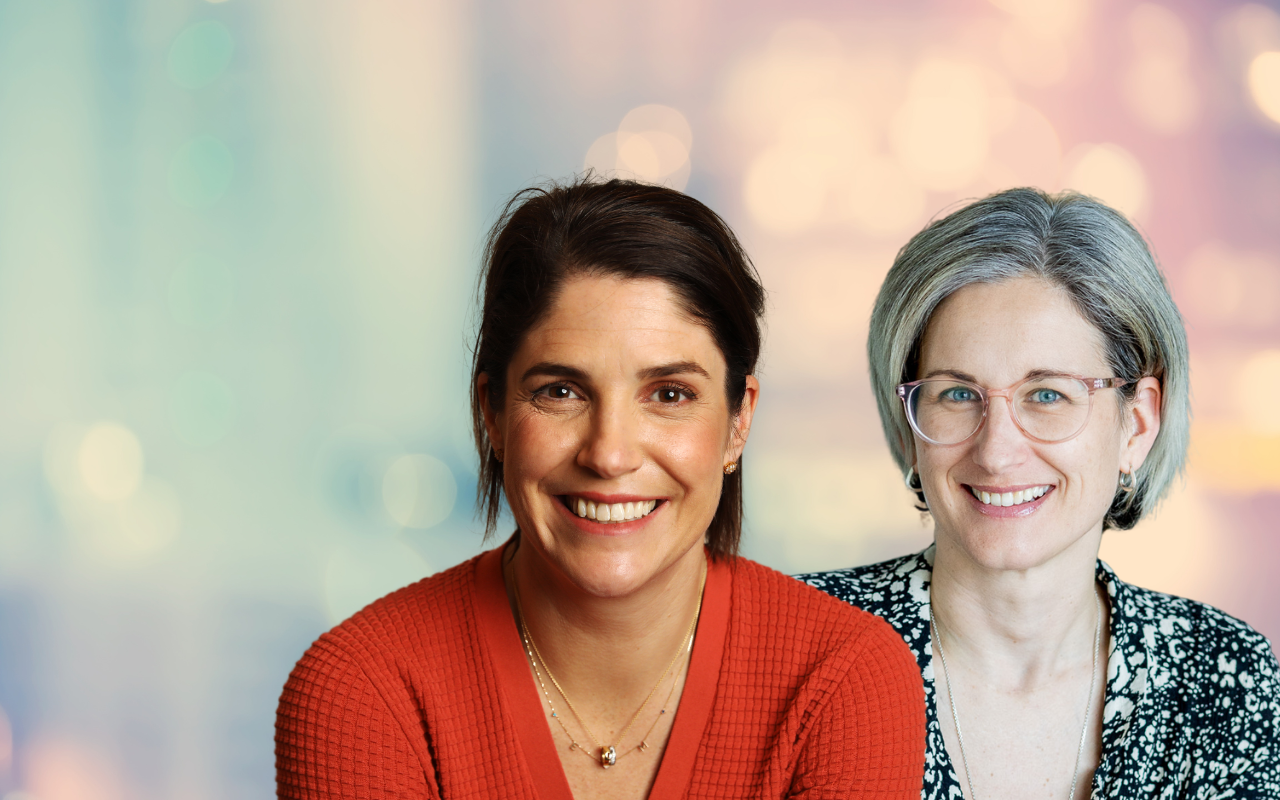Despite endometriosis being common among women in Australia, it remains unknown which patients will benefit from surgery, prompting the need for more local research, write Dr Samantha Mooney and Associate Professor Sarah Holdsworth-Carson.
Endometriosis is a condition where tissue similar to the lining of the uterus (known as endometrium) deposits, grows or develops in other parts of the body (here). Most commonly, this is in the pelvis, but endometriosis can also be found in areas not in direct contact with the pelvis, such as the lungs, heart, skin and skeletal muscles.
It is important to note that not all people with endometriosis identify as female. When the term “woman” is used by the authors, it is used in its inclusive form.
Strikingly, around 14% of Australian women aged 44–49 years are estimated to have endometriosis, and the rate of hospitalisations for the condition has doubled among women aged 20–24 years over the past decade (here).
Two-thirds of women with endometriosis report chronic pelvic pain (here and here), and a diagnosis of endometriosis is made in 50–80% of women with chronic pelvic pain (here). Chronic pelvic pain, which consists of debilitating symptoms such as period pain, daily pelvic pain, bowel and bladder pain, and sex pain, is estimated to affect 25% of women of reproductive age, and 15% of all women worldwide. An alarming recent Australian report stated 47% of female survey respondents had experienced pelvic pain in the past five years (here). This makes it more common than asthma and diabetes.

Aside from the obvious reasons why this should be concerning, the same report noted that four out of five of people experiencing pelvic pain reported that pelvic pain affected their daily activities or caused them to miss days of work or study or to be unable to exercise. Moreover, more than half of those reporting pelvic pain (or 27% of all Australian women) reported that their pain had a negative impact on their mental health and emotional wellbeing. Almost one in three reported that their pain symptoms negatively affected their relationship with their partner (here).
All too often, patients with endometriosis and chronic pelvic pain feel unheard and dismissed – as Gabrielle Jackson, author of Pain and prejudice writes “Women are in pain … but women’s pain is all too often dismissed, their illnesses misdiagnosed or ignored”. This phenomenon has also been reflected in recent studies (here and here).
However, despite the gynaecologist’s ability to surgically remove endometriosis (most commonly done by keyhole surgery), this does not offer long term symptomatic cure for many patients with endometriosis (here). Many women will undergo multiple surgeries, seeking a cure for their symptoms, but for those living with endometriosis-associated pain, the disease is chronic and debilitating (here).
For patients accessing surgical management in the private sector, these surgeries are typically associated with out-of-pocket costs, with some patients paying up to $4200 for their surgery (here). In the public system, each laparoscopic procedure for endometriosis costs the health system over $6000. These costs don’t account for the loss of productivity costs or absenteeism (here). The most recent cost analysis estimates that the cost of illness burden for a person living with endometriosis is $30 000 per year (here).
Unfortunately, there is a lack of correlation between symptom severity and endometriosis severity (that being the size, depth, and number of endometriosis lesions, as well as the way they involve and scar the pelvic organs) (here and here). The evidence supporting surgical management of endometriosis for the management of pelvic pain is surprisingly inadequate (here and here). At least 20% of patients undergoing surgery for the treatment of endometriosis will report no improvement in pain symptoms (here). Dishearteningly, it is also well recognised that over 50% of patients will report recurrence or even worsening of their pain symptoms within 12 months of their keyhole surgery for endometriosis. There is a desperate need to better understand endometriosis, and the evolving role of surgery in symptom management, potentially shifting the focus to non-surgical treatments that may have better success where pain symptoms are concerned (here).
The disconnect between the traditional biomedical model of endometriosis – that the presence of the misplaced endometrium is the only cause for pain, and that removing the disease should be curative – and the real-world experience of millions of people with endometriosis around the world has prompted researchers to ask important questions: (i) why does endometriosis cause pain?, and (ii) why is endometriosis associated with other chronic diseases and pain syndromes?
Endometriosis is linked to pain via several mechanisms, involving inflammation and the nervous system, both peripherally and within the brain itself. Cross sensitisation, or the ability for pain in one body part to induce pain in another body part, is also an important reason why patients with endometriosis are more likely to have other painful conditions (here). Viewing endometriosis, and endometriosis-associated pain, through a biopsychosocial lens broadens the treatment options available to patients.
Multidisciplinary care can be defined as a team approach that uses the skills of individuals from different disciplines, with each discipline approaching the patient from their own perspective.
The Julia Argyrou Endometriosis Centre at Epworth (JAECE) is a dedicated service aiming to deliver the best care for patients with endometriosis, while also improving current diagnosis and treatment options and working towards a cure for endometriosis. The JAECE team apply a holistic approach to patient care, coordinated by Australia’s first dedicated endometriosis nurses. Our nurses assist patients in accessing important allied health practitioners, with recommendations based on the individual’s symptoms and preferences. They also can provide guidance with regards to self-care modalities and resources, and coordinate peer support groups and education sessions.
Our recent systematic review describes evidence-based models and patient-centred perspectives of multidisciplinary care for endometriosis. Ultimately, we aimed to improve understanding of the role of an integrated, multidisciplinary team in effectively addressing patients’ care needs. The systematic review with narrative synthesis searched multiple medical databases for articles published between 2010 through 2022. Nineteen studies (from a total 1625 screened) were eligible for inclusion in the synthesis. Australia is a forerunner in endometriosis research and clinical management, and more than a third of studies were conducted in Australia.
Multidisciplinary care has been adopted by multiple centres around the world. We found that gynaecologists, physiotherapists, and psychologists were the most common members in existing multidisciplinary care models. Pain specialists, psychologists and complimentary medicine practitioners were the most desired additional members to existing care teams.
Reassuringly, the multidisciplinary models of endometriosis care have been evaluated by clinical endpoints such as long term pain and quality of life scores, and the data indicate that the multidisciplinary approach may improve outcomes in people with endometriosis and pelvic pain.
Our study also found that patients with endometriosis desired the following from the multidisciplinary team: to receive reliable information about endometriosis and available treatments, for health care professionals to validate their experiences and preferences, to be guided with a long term plan for treatment, and to have assistance with establishing social and emotional support from partners and family members.
The complex myriad of endometriosis-associated symptoms demands health care services provide high quality multidisciplinary care. Our review highlights the importance of these models to patient experience and outcomes, yet there remains no validated framework for multidisciplinary endometriosis care. Moreover, people with endometriosis have not previously been involved in the design of these care teams. At a practical level, we demonstrated that there were differences between the services offered by current multidisciplinary care teams, and those perceived as being important to patients themselves, such as sex therapists, dieticians and complimentary medicine practitioners.
The role of surgery within the multidisciplinary team was not reported by any included study. The most recent review examining the evidence for surgical management of endometriosis concludes that it remains uncertain as to whether laparoscopic surgery reduces overall endometriosis-associated pain (here). Unfortunately, a focus on the surgical cure for endometriosis is reflected in current funding standards, publicly and privately in Australia and around the world.
While surgical treatments should be available for patients who are most likely to benefit, knowing exactly which patients will receive long term symptom control from surgery, and how this compares to other treatment modalities, remains the “holy grail” of clinical research into endometriosis management.
The Australian Government and some individual state governments have made some important inroads into the recognition of this life-altering disease. The National Action Plan for Endometriosis (NAPE) was published in 2018. It called for:
- improved awareness and education;
- advancements in clinical management and care; and
- further research.
In developing this plan, Australia became the first country to have a roadmap for navigating this challenging disease. The Period, Pain and Endometriosis Program (PPEP) Talks have been created under the NAPE umbrella funding by the Pelvic Pain Foundation of Australia. The Royal Australian and New Zealand College of Obstetricians and Gynaecologists (RANZCOG) was tasked with developing a national guideline for the diagnosis and treatment of endometriosis. Moreover, the time to diagnosis for patients with endometriosis symptoms is gradually reducing, and tools such as the Raising Awareness Tool for Endometriosis (RATE) are hopefully assisting with this (here).
However, all this effort (and money) will be of limited use if we don’t push to prioritise endometriosis and persistent pelvic pain as both clinical and research priorities. Research funding and clinical resources must match that of diseases of comparable prevalence. Relatively simple policy changes may also help, such as broadening (considerably) the Pharmaceutical Benefits Scheme coverage for medical options for symptom control, increasing the rebates for physiotherapy and other allied health services, assisting employers to adjust workplace procedures to enable people with endometriosis to stay in the workforce, increasing public funding for fertility treatment access, and addressing inequities in access to care for minority populations and those in remote areas, to name a few. Based on the extraordinary burden of disease, the new National Women’s Health Advisory Council must put endometriosis and pelvic pain high on their agenda. A shift in paradigm is needed: costly surgical managements should be readily accessible to those who are most likely to benefit from them, but education and funding should reflect our knowledge that not all patients will benefit from surgical management. Of greatest importance, adoption (at the policy making level) of the biopsychosocial approach to endometriosis symptom management should ensure multidisciplinary models are financially practicable and accessible.
Dr Samantha Mooney is an Obstetrician and Gynaecologist at Mercy Hospital for Women and Epworth Healthcare, fertility specialist at Genea, and a clinical researcher and PhD candidate at the University of Melbourne. She is also the Acting Director of the Julia Argyrou Endometriosis Centre at Epworth.
Associate Professor Sarah Holdsworth-Carson is a University of Melbourne Research Fellow in the Gynaecology Research Centre at the Royal Women’s Hospital, and the Research Program Manager at the Julia Argyrou Endometriosis Centre at Epworth.
The statements or opinions expressed in this article reflect the views of the authors and do not necessarily represent the official policy of the AMA, the MJA or InSight+ unless so stated.
Subscribe to the free InSight+ weekly newsletter here. It is available to all readers, not just registered medical practitioners.
If you would like to submit an article for consideration, send a Word version to mjainsight-editor@ampco.com.au.

 more_vert
more_vert